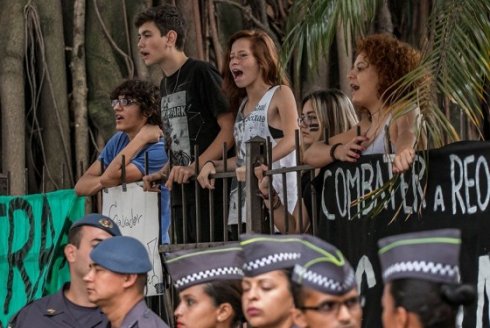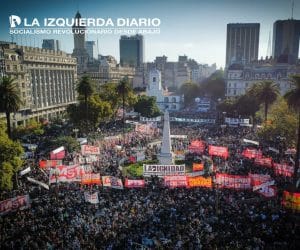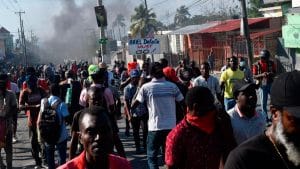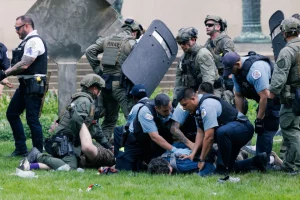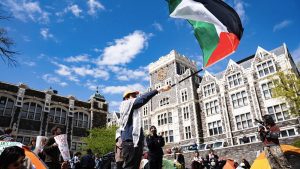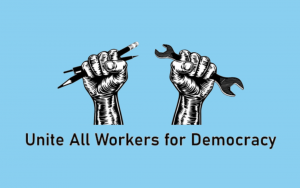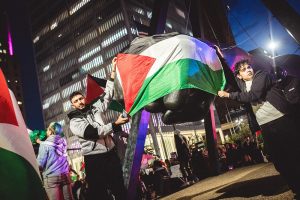At the beginning of 2015, the Sao Paulo public school system was already over-crowded—often with 40 students in a classroom—and many teachers could not find full time employment. Due to the economic crisis, the governor of Sao Paulo, Geraldo Alckmin, is closing over 90 schools. The Alkimin government claims that some schools are not functioning to capacity, so he hopes to concentrate more students in fewer schools.
The school re-organization plan means more than just additional over-crowding. The school closings also mean that teachers will be fired, as teachers will be expected to teach more students at a time. It also means that many high school students will drop out of school, since many of the students have after school jobs. They rely on schools to be near their home in order to be able to manage a job, often a financial necessity for the family.
After the announcements of the school closings, protests broke out across the state. Some of them were relatively small, with only one hundred students, while some were bigger, gathering almost a thousand. Students also made videos of protests that circulated on YouTube.
However, these protests were not enough to stop the school closings, so on November 11, students at Fernao Dias occupied their school. At 6 am, the students locked the door of the school and organized a student assembly that voted to in favor of occupation, despite threats from the administration, some teachers, and the police. They also reached out to other schools, inviting students to join their occupation and created a pamphlet that explained how to occupy a school.
A few days later, three schools were occupied. After one month, over 190 schools had been occupied in Sao Paulo and a few in other states. Most of these schools are still occupied to this day.
The government tried several tactics to break the student movement. At first, officials proposed that students leave the occupation to negotiate with the governor in his office. The students answered that the governor should send a representative to them, but they had no intention of leaving the occupation. The government also tried to negotiate with each individual school, using a “divide and conquer” technique. Students rejected proposals to negotiate individually, saying that the government would have to negotiate with students from all occupied schools at once, or not at all.
The media used another insidious tactic, releasing a story claiming that the high school students had been victorious because there would no longer be school closings. However, upon further inspection, the governor had merely announced he would not close high schools in 2015.
The government has also used the police to intimidate students and even try to force them out of the occupations. At some schools, the police beat and arrested students.
Brazilian students were inspired by the example of Chilean students in 2011 who organized mass protests and occupations, demanding free public education—a movement known as the “Chilean Winter.” During the course of the Brazilian occupations, students Skyped with Chilean students, receiving support, encouragement and tips.
Organizing the occupations
One high school student participating in the occupations said, “We are not only running schools the way we want, we are building the world we want.” Certainly, the ways that high school students have organized is exemplary. First of all, all decisions pertaining to the occupation are made via student assembly and by democratic vote. These student assemblies serve as the organizational form of the occupation and to resolve the day-to-day problems that come up.
Each school has committees that address the needs of the occupation, from cooking and cleaning to media and community outreach. Media and outreach are central aspects of the occupations, as students count on community support for the supplies needed to maintain their occupation. In fact, at most schools, students went door to door in the neighborhoods surrounding the schools to explain the occupation to residents and ask for food donations. Most schools have kitchens, which the students cook in everyday using the school’s supplies and community donations.
The students who are on the front lines of the occupations are overwhelmingly Black and female. These students argue that it is central to break down existing forms of oppression, and declared the importance of gender balance in school chores—making sure boys participate in “traditionally female” tasks such as the cooking and cleaning.
As for schooling, one student said, “I am learning more in these few months than I did in years of school. We are bringing in more culture to the school than I have ever seen in a public school in Brazil.” Community organizations are invited into the school to run workshops on topics such as feminism and the media, drumming and students’ rights at occupations. Many teachers who support the occupation come to school to teach classes. Prior to the occupation, teachers had to follow a curriculum based on preparing students for standardized tests. At occupied schools, students vote on the topics they want to learn about and teachers are free to propose classes of their own interest. Students have taken classes about the Russian Revolution and the Arab Spring, topics that would not be covered by the traditional curriculum.
In late November, with over 190 schools occupied, some occupations organized to protest in a more public way that the government could not ignore. Students decided to take to the streets, bringing their desks with them, stopped traffic by sitting in their desks in the middle of the road. Students suffered intense repression from the police, facing tear gas, rubber bullets and even some arrests.
In the first week of December, the high school students won an important victory: the governor of Sao Paulo said that he would not close any schools in 2016, saying that it was necessary to hold a dialogue. In a regional conference of occupied schools where each occupied school sent delegates, students decided to continue the school occupations until the governor issues an official declaration that the schools will not be closed. Students also announced that they would stay in the schools until the government officially stated that no students, parents, teachers, administrators or supporters would be punished for supporting the occupation.
On Wednesday, December 9, there was a mass protest in support of the occupied high schools, gathering 10,000 people. Later in the week, three schools were occupied in the state of Goiais, protesting their state’s own manifestation of school closings.
Christmas and the New Year’s are coming up, but students are not deterred. “We are going to have Christmas dinner at school and New Years at school,” a student said.
In a country riddled with economic crisis and government cuts to worker benefits, the high school students of Sao Paulo are showing the country that it is possible to stand up to the government and win.They are showing that students and workers should not be the ones to pay for the economic crisis and that united, students can change the face of Brazilian public schooling.


